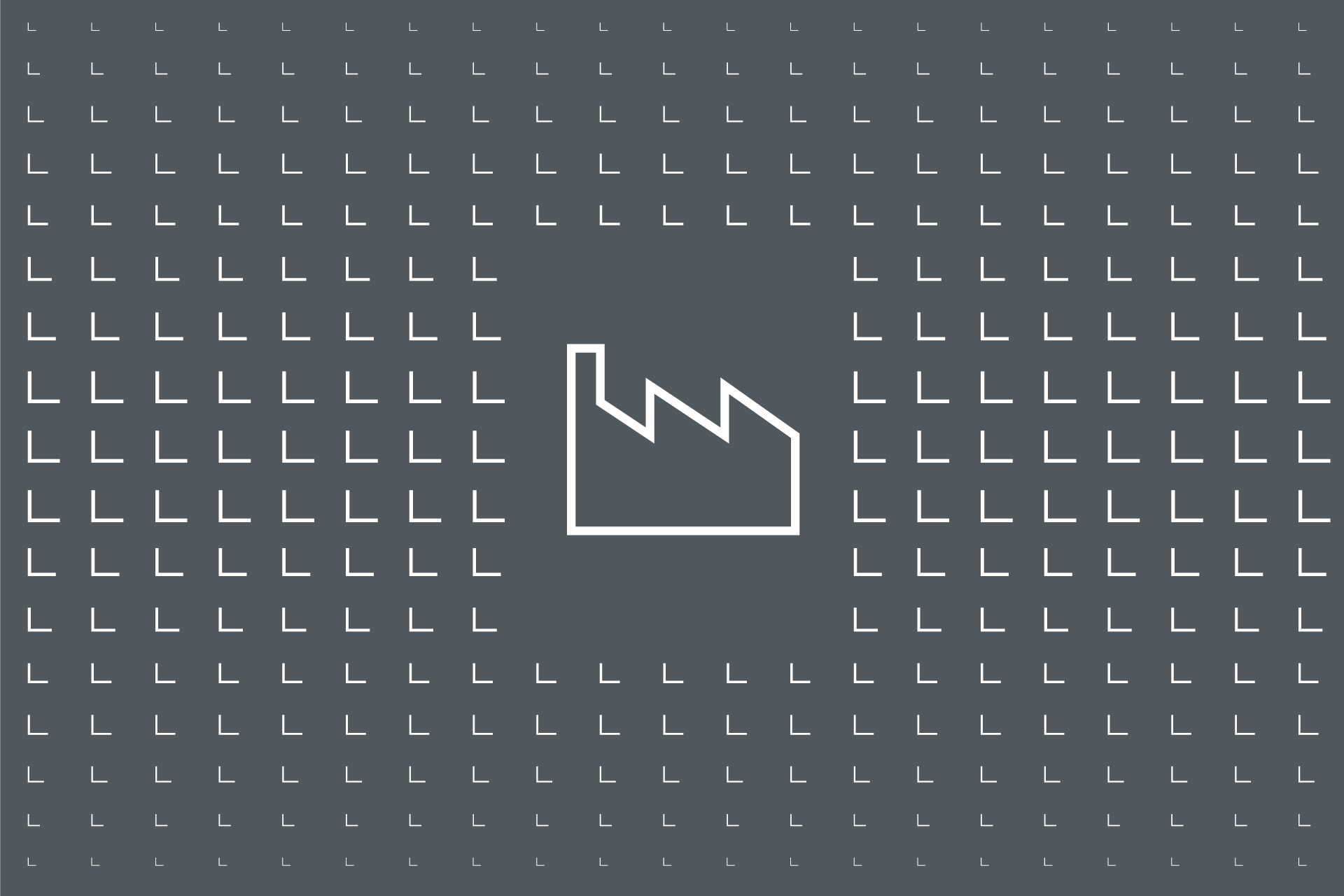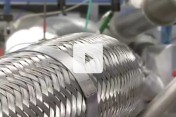Air management systems
The air management system is among the most important contributors to the comfort on board an aircraft.
Liebherr has complete capability to develop, supply and service all aircraft and engine air systems: from the engine bleed air ports and engine pneumatics to the air distribution in the cabin and from the wing ice protection system to cabin pressurization.

This pack is part of the air conditioning system that Liebherr-Aerospace supplies for the Boeing 747-8 program.
Liebherr also offers supplemental cooling, hydraulic cooling, fuel tank inerting air supply or air humidification. The company can either supply a complete integrated air management system (i.e. unique controller to drive multiple systems) or an individual dedicated system.
Liebherr masters the complete development including certification testing, as well as the production and worldwide customer services all along product life.
Liebherr is the system supplier for all kinds of platforms like commercial aircraft, regional aircraft, business jets, helicopters, UAV’s, fighters or military transport airlifters.

Liebherr-Aerospace develops, manufactures and services the air conditioning pack for the Airbus A320ceo/neo.
Air conditioning
Air conditioning systems create a safe and comfortable environment for passengers and crews inside the aircraft cabin: significant amounts of cooled fresh air are hence brought into the pressurized cabin in order to maintain a comfortable cabin environment and also to ensure avionics and electronics ventilation and/or cooling.
The air conditioning system processes high pressure, high temperature air which is most of the time taken or “bled” from the aircraft engines (engine bleed air system).
The core of the air conditioning system consists of air conditioning packs based on the so-called air cycle machines using air bearing technology allowing higher reliability. These air cycle machines are usually pneumatically driven but can also be either electrically or mechanically driven. Various components like heat exchangers, re-heaters, condensers, water extractors, flow control valves, sensors or controllers are also part of the system.
Once the cooled air is blown into the cabin, it needs to be ducted to the appropriate zones and circulated in the cabin. This is accomplished by the so-called cabin distribution system.
Ventilation and heating
Some consumers may require local ventilation. This function is performed by the ventilation control system, basically made of electrically driven fans, valves, sensors, controllers and software. Some others may require local cooling. This is typically ensured by a vapor cycle system. Various components like compressors, heat exchangers, evaporators, condensers, water extractors, sensors and controllers are part of the system.
Alternatively, when required, Liebherr systems can also provide local heating, for instance, within the crew rest areas. This is ensured by the heaters developed by Liebherr.
Humidification
Liebherr offers additional technologies enhancing the cabin air quality and thus the comfort of passengers and crew.
As the atmosphere at high altitude is very dry, cabin air has a very low relative humidity level, especially during long flights. It is therefore necessary to raise the air humidity level up to 20 or 25 per cent in order to guarantee appropriate comfort conditions for passengers and crew, either in the cockpit, the cabin or the crew rest compartments.
Liebherr supplies humidification systems for commercial airplanes and business jets. Connected to the water system of the aircraft, this system may be either powered by engine bleed air or by the aircraft’s electrical network.
If an aircraft needs to be upgraded to incorporate such a system, Liebherr proposes a specific installation (Supplemental Type Certificate).

Engine bleed valve for the C-390 Millennium of Embraer.
Engine bleed air systems bleed high pressure, high temperature air from the engine's low and high pressure ports. The air flow is processed through temperature and pressure control devices and supplied downstream to the aircraft's main air conditioning system, to the airframe anti-icing system and to the main engine starting system.
An engine bleed air system consists of temperature control valves, pressure regulating and shut-off valves, high pressure valves, over-pressure valves, pre-coolers heat exchangers, high pressure ducting, temperature sensors, pressure sensors, overheat / hot air leak detection devices and a control and monitoring electronic unit.
Liebherr also supplies high pressure, high temperature engine pneumatic valves and heat exchangers to perform such functions as cowl anti-icing, intermediate pressure check valve, handling bleed off valve, high pressure/low pressure clearance regulating valve.

The trim air pressure regulating valve is part of the cabin pressure control system Liebherr-Aerospace provides for the Airbus A330ceo/neo and A340 programs.
The atmospheric pressure decreases as the altitude rises and becomes incompatible with the human physiology. That is why the pressure level and change rate inside the cabin need to be controlled in order to provide satisfactory pressure values for comfort and safety of passengers and crew. During all flight phases this is done fully automatically by the pressurization control system.
The complete cabin pressure control system provided by Liebherr includes outflow and safety valves, control panel, controller and software.

Electrical anti-icing test rig at Liebherr-Aerospace's test facility in Toulouse (France)
When a plane flies in frosting conditions, the nacelle and wings can be covered with white frost. There can even be accumulation of ice on the leading edges.
This accumulation of ice typically deteriorates the wing aerodynamic performances, in addition to increasing the aircraft’s weight, which is particularly detrimental to the aircraft’s performances and safety. It is therefore necessary to remove this ice or to prevent ice accretion.
The airframe anti-icing system carries hot air supplied by the engine bleed air system and blows it along the ice-sensitive parts of the airframe (engine nacelle air intakes, wing and tail leading edge).
An airframe anti-icing system is made up of pressure regulating valves, temperature sensors, pressure sensors, high pressure ducting, overheat / hot air leak detection devices and controller.

Supplemental cooling system for the Airbus A380: The supplemental cooling system developed and manufactured by Liebherr-Aerospace for the A380 is used for the cooling of food and beverages on board.
Besides the air conditioning system used to cool the air in the cabin for the passengers, an additional on-board cooling system might be necessary for food storage or avionics thermal management.
This function is achieved by a high power centralized cooling system. The cooling generated is distributed by a liquid loop carrying cooling in every place where it is required. A heat exchanger connected to this liquid loop converts the cooling power into air cooling blown on the food.
Such systems can also be used to cool down radars or electronics.
Liebherr also supplies hydraulic cooling systems to cool down high pressure (5,000 psi) hydraulic channels onboard the aircraft.

Isolation valve of the fuel tank inerting system for the Airbus Long Range Family ceo/neo
Nitrogen generation for fuel tank inerting requires the supply of high pressure air. Liebherr offers a wide range of fuel tank inerting air supply systems based on bleed air or electrically compressed air thanks to such proprietary components as heat exchangers, valves, air cycle machines, compressors and associated controls.

The test center ISA (Intégration des Systèmes d'Air) at Liebherr-Aerospace in Toulouse features exceptional facilities to conduct fullscale as well as digital model testing of all air management systems developed by Liebherr-Aerospace Toulouse SAS.
Liebherr-Aerospace Toulouse SAS, Liebherr’s competence center for air management systems, has comprehensive test facilities to address the highest acoustics, altitude and vibration international standards. In the facility, tests can be run according to state-of-the-art civil and military aviation, automotive, railway vehicles industry and industrial regulation standards.
Liebherr-Aerospace's skilled and experienced staff guarantees the highest level of expertise to support R&T, development or qualification phases.
On 9,000 m², development and qualification test rigs can be used for combined tests reproducing engine or fuselage conditions (mechanical, pneumatic, climatic, and electrical).
Liebherr-Aerospace offers:
- Comprehensive tests capabilities and state-of-the art measurement accuracy for equipment or systems
- Vibration shakers
- An anechoic chamber
- Altitude chambers
With the company's customized approach, customers can stay one-step ahead due to:
- Optimal test conditions guaranteeing test confidentiality
- Standard to specific package support and services along with tailored recommendations
- Liebherr's expertise to reduce development costs and time to market
…and Liebherr-Aerospace will continue to invest in its test and research facilities to develop technological solutions for tomorrow.
By clicking on “ACCEPT”, you consent to the data transmission to Google for this video pursuant to Art. 6 para. 1 point a GDPR. If you do not want to consent to each YouTube video individually in the future and want to be able to load them without this blocker, you can also select “Always accept YouTube videos” and thus also consent to the respectively associated data transmissions to Google for all other YouTube videos that you will access on our website in the future.
You can withdraw given consents at any time with effect for the future and thus prevent the further transmission of your data by deselecting the respective service under “Miscellaneous services (optional)” in the settings (later also accessible via the “Privacy Settings” in the footer of our website).
For further information, please refer to our Data Protection Declaration and the Google Privacy Policy.*Google Ireland Limited, Gordon House, Barrow Street, Dublin 4, Ireland; parent company: Google LLC, 1600 Amphitheatre Parkway, Mountain View, CA 94043, USA** Note: The data transfer to the USA associated with the data transmission to Google takes place on the basis of the European Commission’s adequacy decision of 10 July 2023 (EU-U.S. Data Privacy Framework).Support solutions for qualification and development tests
Liebherr-Aerospace Customer Services
Liebherr-Aerospace Toulouse SAS - Support Solutions for Development and Qualification Tests
Technologies for Vertical Lift
AW149/189 Air Management System
AW169 Air Management System
COMAC C919 Air Management System
CSeries Air Management System
E-Jet E2 Air Management System






